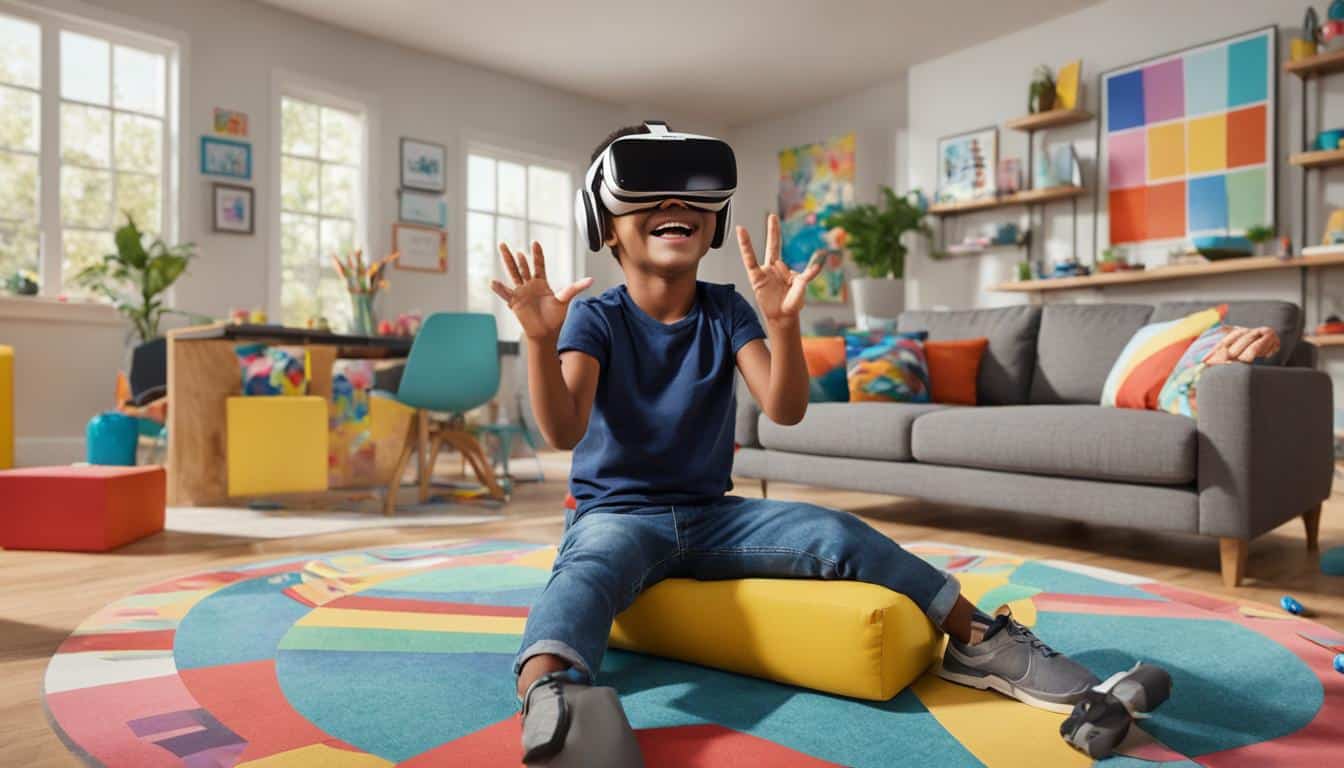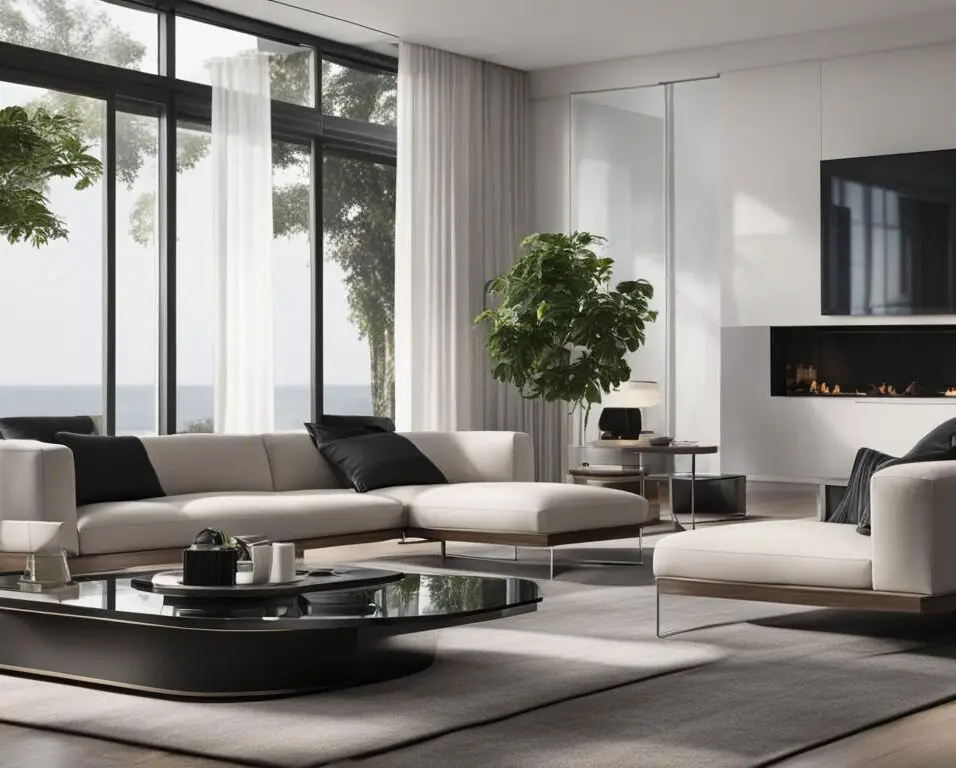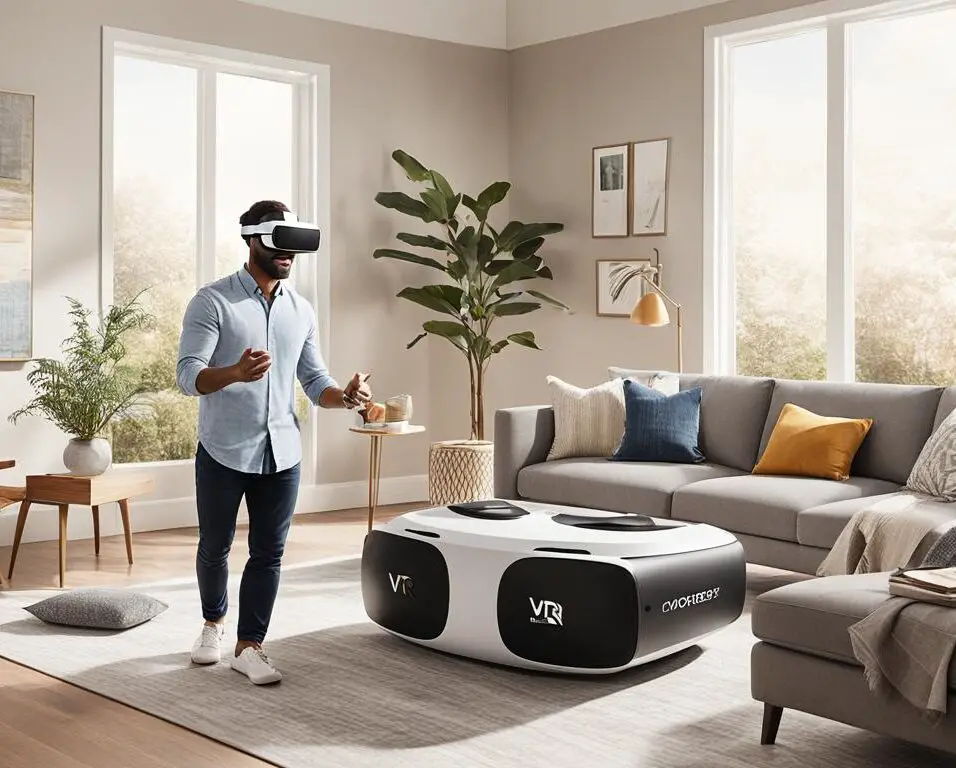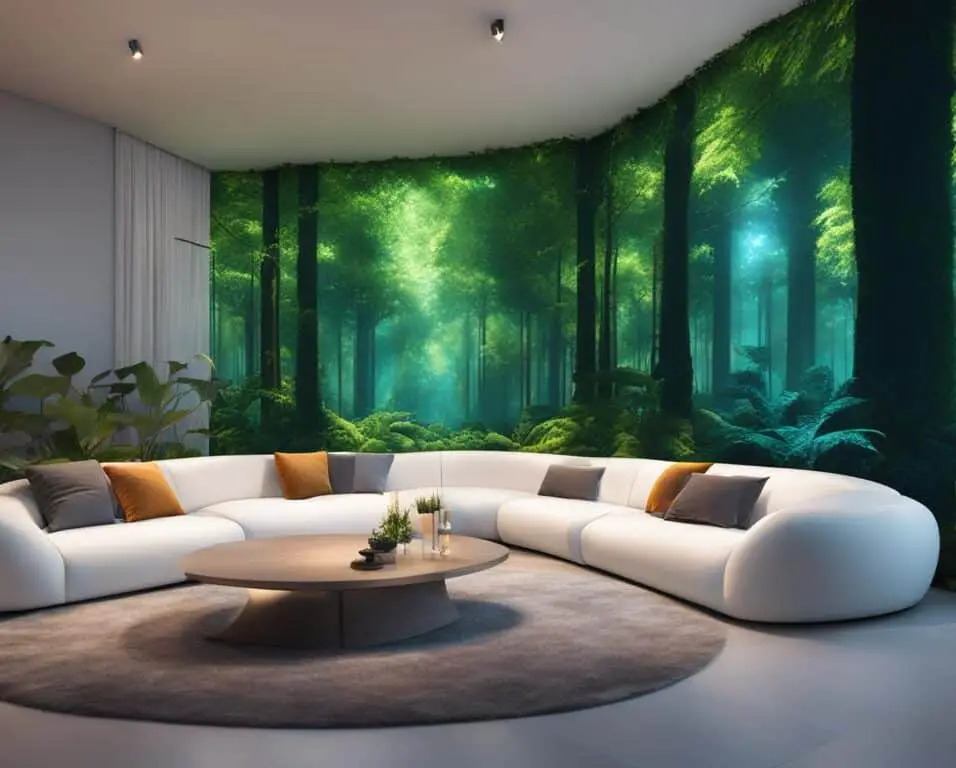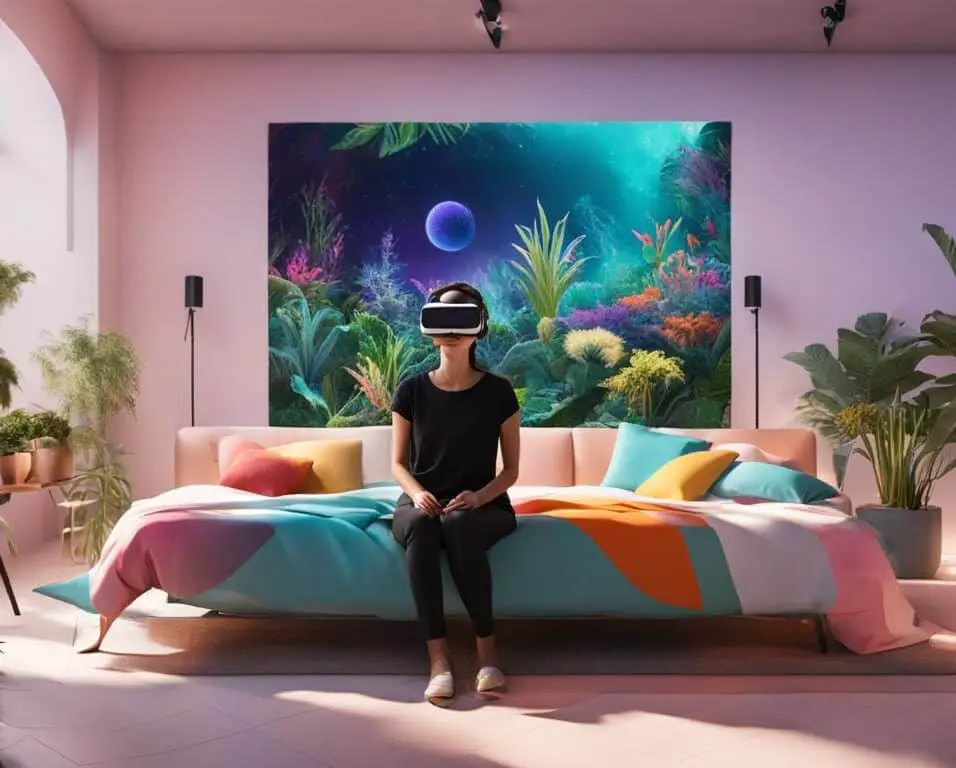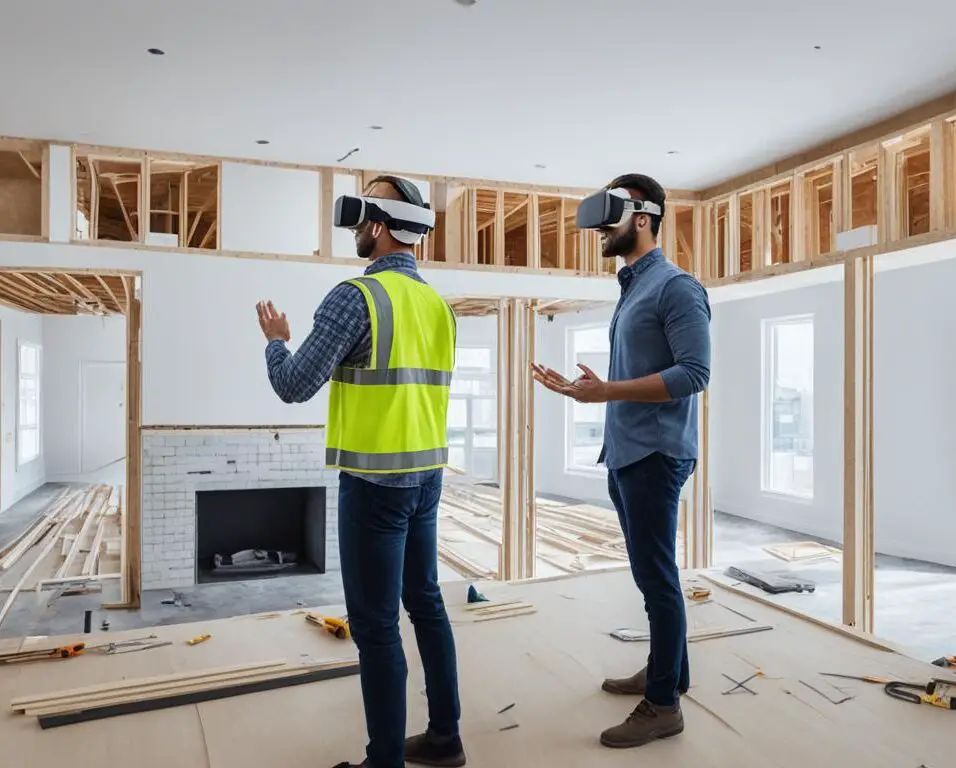Kid-Friendly Design: VR for Creating Child-Friendly Home Spaces
Virtual Reality (VR) technology is revolutionizing the way child-friendly home designs are created. By using VR, designers can create safe and engaging spaces for kids that cater to their specific needs. This innovative technology allows for immersive design options, where designers and homeowners can virtually experience and visualize the layout, furniture placement, and overall aesthetics of a child-friendly home design. With VR, creating a space that is both visually appealing and functional for children has never been easier.
Key Takeaways:
- VR technology enables designers to create child-friendly home designs that are safe and engaging for kids.
- Immersive design options in VR allow designers and homeowners to visualize the layout, furniture placement, and overall aesthetics of the space.
- By using VR, designers can incorporate enhanced safety measures into child-friendly home designs.
- VR technology promotes a collaborative design process between designers and homeowners, ensuring the final design meets specific needs and preferences.
- The future of child-friendly home design lies in the continued advancement of VR technology and its integration with other innovative solutions.
The Benefits of VR in Designing Child-Friendly Homes
When it comes to designing child-friendly homes, VR technology offers numerous benefits that enhance the overall design process. With VR, designers can incorporate enhanced safety measures that prioritize the well-being of children. Through virtual simulations, potential hazards can be identified, allowing designers to make necessary modifications and create a safe environment for kids to thrive in.
Furthermore, VR enables designers to experiment with different layouts, furniture options, and color schemes, providing a more accurate representation of the final design. This ensures that the child-friendly home design not only meets the specific needs and preferences of the homeowners but also creates a visually appealing and engaging environment for children. Whether it’s testing out the placement of furniture or exploring various color palettes, VR empowers designers to make informed decisions that result in a cohesive and child-friendly home design.
Incorporating VR technology into the design process allows for a more immersive and interactive experience. By stepping into a virtual simulation, designers can gain a deeper understanding of how children will interact with the space and identify areas that can be optimized for play, learning, and creativity. It bridges the gap between imagination and reality, enabling designers to create spaces that genuinely inspire and engage children.
Enhanced Safety Measures Through VR Simulations
One of the key advantages of VR technology in designing child-friendly homes is the ability to implement enhanced safety measures. By utilizing virtual simulations, designers can identify potential hazards, such as sharp edges, loose cables, or uneven flooring, and make necessary modifications before the construction phase. This proactive approach ensures that children can navigate the space safely and provides peace of mind for homeowners.
| Benefits of VR in Designing Child-Friendly Homes | Description |
|---|---|
| Enhanced Safety Measures | Identify and address potential hazards before construction |
| Accurate Representation | Experiment with layouts, furniture options, and color schemes for a precise design |
| Immersive Experience | Step into a virtual simulation to visualize how children will interact with the space |
| Engaging and Playful Spaces | Create environments that inspire creativity, learning, and play |
| Collaborative Design Process | Empower homeowners to actively participate in the creation of their child-friendly home |
Creating Engaging and Interactive Spaces for Kids
VR technology provides designers with the tools to create engaging and interactive spaces for kids. By incorporating child-friendly design elements such as vibrant colors, fun patterns, and ergonomic furniture, designers can create environments that stimulate creativity, encourage play, and promote learning. VR allows designers to visualize these elements in a virtual simulation, helping them make informed decisions about the placement and arrangement of various design features. This ensures that the end result is a space that not only looks visually appealing but also fosters engagement and interaction for children.
Creating an Immersive Experience
One of the key benefits of using VR in designing child-friendly spaces is the ability to create an immersive experience. With virtual simulations, designers can transport children into a world where their imagination can run wild. Whether it’s exploring a fantastical jungle, diving into the depths of the ocean, or flying through outer space, VR technology enables designers to create interactive spaces that truly captivate and engage children.
By incorporating interactive elements such as touch-sensitive surfaces, motion sensors, and sound effects, designers can enhance the immersive experience and make the space come alive. These interactive features not only provide children with a unique and entertaining environment but also stimulate their senses and promote active play.
Encouraging Creativity and Learning
Child-friendly spaces should not only be visually appealing but also encourage creativity and learning. VR technology offers designers the opportunity to incorporate educational elements and interactive activities into the space. For example, a VR simulation could allow children to explore historical landmarks, solve puzzles, or interact with virtual characters that teach them about various subjects.
By integrating educational content with interactive features, designers can create spaces that promote both fun and learning. These spaces serve as a platform for children to develop their cognitive skills, expand their knowledge, and ignite their curiosity in an engaging and interactive manner.
Customizing the Experience
One of the advantages of using VR technology in designing child-friendly spaces is the ability to customize the experience to suit individual preferences and needs. VR allows designers to easily tweak and modify elements such as color schemes, furniture arrangements, and interactive features to create a space that aligns with the unique characteristics of the child.
For example, a child with sensory sensitivities may benefit from a space with muted colors and soft textures, while a child with an affinity for adventure may prefer a space that incorporates vibrant colors and dynamic elements. VR simulations enable designers to experiment with different design options and make informed decisions that cater to the specific needs and preferences of each child.
| Benefits of Creating Engaging and Interactive Spaces for Kids | Examples |
|---|---|
| Promotes creativity and imagination | Virtual interactive art walls that allow children to draw and paint in a three-dimensional space |
| Encourages active play and physical movement | Virtual obstacle courses that require jumping, crawling, and climbing |
| Enhances cognitive development | Virtual puzzles and games that challenge problem-solving skills |
| Fosters social interaction and collaboration | Virtual worlds where children can interact and collaborate with others in real-time |
Collaborative Design Process with Homeowners
When it comes to creating child-friendly home designs, collaboration is key. With the advent of Virtual Reality (VR) technology, homeowners can now actively participate in the design process, making it a truly collaborative experience.
Through collaborative design, homeowners can provide their input, preferences, and suggestions, ensuring that the final child-friendly home design caters to their specific needs and desires. VR technology enables designers to present virtual simulations to homeowners, allowing them to immerse themselves in the proposed design concepts and visualize their future child-friendly space. This interactive platform empowers homeowners to make informed decisions about the design elements that will be incorporated into their home.
By involving homeowners in the design process, designers can create child-friendly homes that reflect the unique personalities and preferences of the families who will be living in them. This collaborative approach ensures that the final design is not only functional but also customized to meet the needs of the homeowners and their children.
Collaborative design with homeowners leads to a more meaningful and satisfying child-friendly home customization experience. It fosters a sense of ownership and involvement, allowing homeowners to create spaces that they can be proud of and that truly reflect their family’s needs. Homeowners become active participants in the design journey, contributing their ideas and insights to shape a home that is safe, engaging, and tailored to their children’s well-being.
Collaborative design process with homeowners ensures:
- Homeowners actively participate in the design process
- Designs are customized to meet specific needs and desires
- Virtual simulations help homeowners visualize the proposed design concepts
- Homeowners can make informed decisions about design elements
- Child-friendly homes reflect the unique personalities and preferences of the homeowners
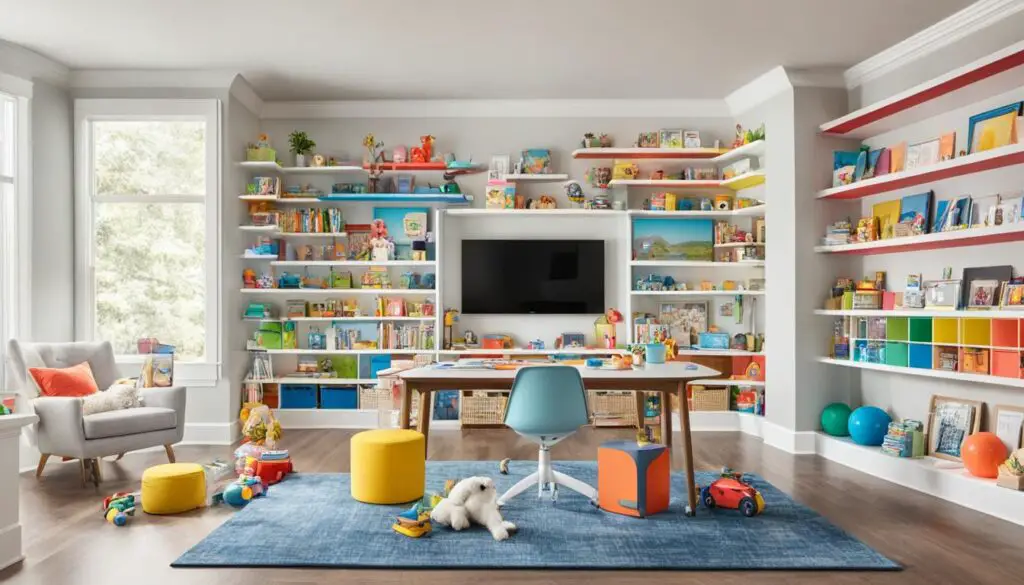
The Future of Child-Friendly Home Design
As VR technology continues to advance, the future of child-friendly home design looks promising. With ongoing VR advancements, designers will have even more immersive and realistic virtual simulation capabilities at their disposal. This will greatly enhance the design process and allow homeowners to have a more interactive and engaging experience.
One exciting future trend is the potential integration of haptic feedback into VR technology. This would enable homeowners to not only see and hear their virtual designs but also feel and interact with them in a tactile manner. Imagine being able to touch and experience the texture of furniture, materials, and other design elements within the virtual environment.
Furthermore, the integration of VR with other smart home technologies holds immense potential for child-friendly home innovations. By connecting VR to elements such as lighting, temperature control, and interactive devices, designers can create seamless and interactive spaces for children that align with the overall home automation system.
With these future advancements, VR will play a vital role in revolutionizing child-friendly home design. It will empower designers to create safe, visually appealing, and engaging spaces that cater to the unique needs of children and their families.
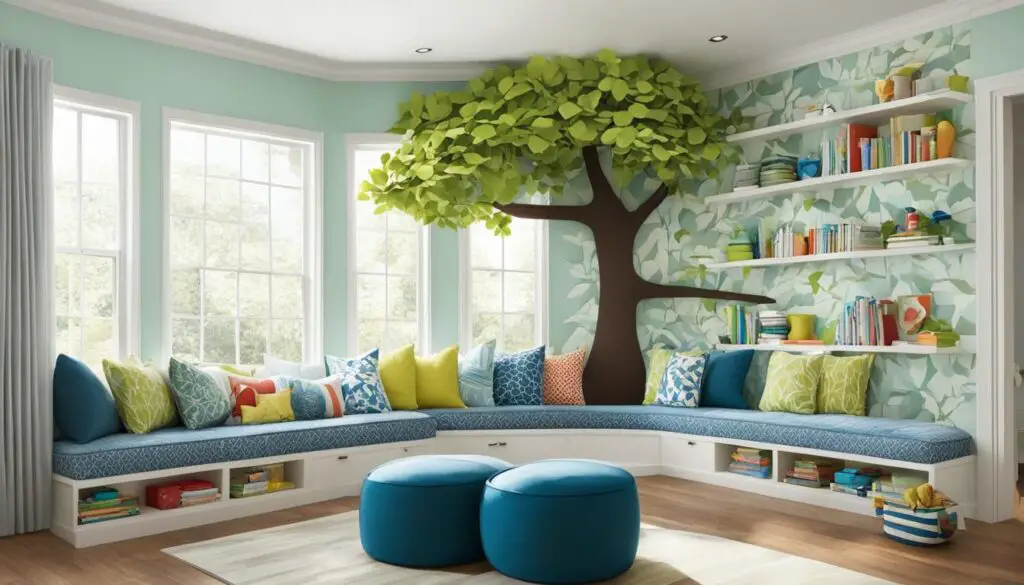
| Advancements | Potential Impact |
|---|---|
| Haptic Feedback Integration | A more immersive and tactile design experience for homeowners, allowing them to feel and interact with virtual elements. |
| Integration with Smart Home Technologies | Seamless and interactive child-friendly home designs that integrate with the overall home automation system, providing a cohesive and convenient experience for children. |
Conclusion
VR technology is revolutionizing child-friendly home designs, providing designers with a powerful tool to create safe and engaging spaces for kids. By using VR, designers can visualize and experiment with various design elements, ensuring that the final design meets the specific needs and preferences of homeowners while promoting the well-being of children.
The collaborative design process facilitated by VR allows homeowners to actively participate in the creation of their child-friendly home, resulting in a space that is both visually appealing and functional. By incorporating child-friendly design elements, such as vibrant colors and ergonomic furniture, designers can create environments that stimulate creativity, encourage play, and promote learning.
As VR technology continues to evolve, the future of child-friendly home design holds even more exciting possibilities. Advancements in VR technology may lead to even more immersive and realistic virtual simulations, as well as integration with other smart home technologies to create a seamless and interactive experience for children. With VR, the possibilities for creating safe, engaging, and innovative child-friendly home designs are limitless.
FAQ
How is VR technology revolutionizing child-friendly home designs?
VR technology allows designers to create safe and engaging spaces for kids by providing immersive design options. With VR, designers and homeowners can virtually experience and visualize the layout, furniture placement, and overall aesthetics of a child-friendly home design.
What benefits does VR offer in designing child-friendly homes?
VR enables designers to incorporate enhanced safety measures into the design process by creating virtual simulations that identify potential hazards. It also allows for experimenting with different layouts, furniture options, and color schemes, resulting in a more accurate representation of the final design.
How does VR help in creating engaging and interactive spaces for kids?
VR technology provides designers with the tools to incorporate child-friendly design elements such as vibrant colors, fun patterns, and ergonomic furniture. Designers can visualize these elements in virtual simulations, helping them make informed decisions about their placement and arrangement to stimulate creativity, encourage play, and promote learning.
How does VR facilitate a collaborative design process between designers and homeowners?
Homeowners can actively participate in the design process by providing input, preferences, and suggestions. Designers can use VR to present virtual simulations to homeowners, allowing them to experience and visualize the proposed design concepts. This collaboration ensures that the final child-friendly home design meets the specific needs and desires of the homeowners and their children.
What does the future hold for child-friendly home design with VR technology?
The future advancements in VR technology may allow for even more immersive and realistic virtual simulations. Designers may be able to use haptic feedback to provide a tactile experience in the virtual environment, and VR could be integrated with other smart home technologies to create a seamless and interactive experience for children.



